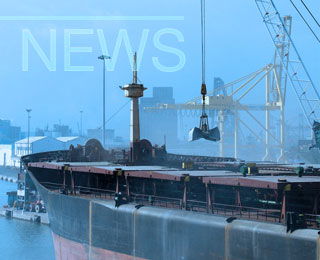On 9 June the State Bank of Pakistan (SBP) released the “Pakistan Economic Survey FY23”, critically reviewing all sector performance, including the cement sector in 9MFY22-23 and the remaining months of FY22-23.
While commenting, Topline Pakistan Research said the outgoing year was one of the worst periods in Pakistan’s recent economic history. Pakistan’s GDP growth is provisionally estimated at 0.3 per cent for FY22-23 as against the target of five per cent for FY22-23 and 6.1 per cent in FY21-22. This will be the third instance in the last 50 years when Pakistan has recorded GDP growth below one per cent. In FY08-09, GDP growth was 0. 4 per cent due the global financial crisis, while in FY-1920, it was negative 0.9 per cent as a resul of the COVID-19 pandemic.
Meanwhile, on a positive development, Pakistan set an estimated 3.5 per cent GDP growth target for FY23-24.
Lower dispatches in March
The Pakistani cement industry has faced significant challenges recently, including a decrease in demand due to the impact of floods on infrastructure and a construction slowdown caused by political uncertainty. The government’s fiscal constraints and limited foreign aid have delayed rehabilitation efforts, further affecting cement demand. Additionally, the economic slowdown in global markets has resulted in lower cement exports, with countries like Sri Lanka and Bangladesh facing foreign exchange crises. Furthermore, the industry has also been impacted by the massive increase in prices of construction materials.
As a result, the cement dispatches showed a hefty decline of 24.2 per cent in March 2023 YoY due to a massive decline in exports. Total cement dispatches stood at 3.8Mt as against 5.01Mt last year. Domestic consumption suffered a contraction of 28.7 per cent and reached 3.36Mt when compared to 4.71Mt in March 2022.
Despite the challenges, there was a positive aspect with an uptick in export shipments, which surged by 48.5 per cent from 0.3Mt to 0.44Mt over the same timeframe. The launch of two developmental projects by the World Bank in Afghanistan, resulting in the construction of concrete roads and streets, has created a surge in demand for cement in Afghanistan. As a result, cement exports from Pakistan to Afghanistan have increased significantly in the last two months.
North-South trends
Domestic consumption in the north was recorded at 2.72Mt in March 2023 compared to 3.85Mt dispatches in the same month last year, thus showing a negative growth of 29.3 per cent. Exports from the north grew by 24.6 per cent and stood at 0.1Mt during the period as compared to 0.08Mt in the same period last year.
Meanwhile, demand in the south decreased by 26.2 per cent and reached to 0.64Mt in March 2023 as compared to 0.86Mt in March 2022. At the same time, exports from the region increased by 57.4 per cent, from 0.21Mt to 0.34Mt in March 2023.
Cumulative dispatches
Total local dispatches during July 2022-March 2023 dipped by 15.5 per cent to 30.56Mt from 36.17Mt last year. Additionally, total exports during the same period amounted to 3.04Mt, reflecting a decline of 34.5 per cent compared to 4.64Mt in the corresponding period of the previous year due to increased production costs, higher freight charges and soaring coal prices. Dispatches in the northern region experienced a significant decline of 16.3 per cent, whereas the southern region witnessed a notable drop of 10.9 per cent in local dispatches. Exports from the north surged by 14.6 per cent, while the south witnessed a fall of 43.1 per cent during the period.
Total cumulative dispatches (local and exports) declined 17.6 per cent and reached 33.6Mt during July 2022-March 2023 against 40.8Mt in the year ago corresponding period.
Coal use
From total coal consumption of 15.416Mt, power, brick kilns, and cement/other sectors consume 47.3, 21.5, and 31.1 per cent, respectively. Furthermore, imported coal was consumed by power plants, cement plants, and steel-making industries. During July 2022-March 2023, domestic coal production totalled at ~9.4Mt and about 6.58Mt of coal was imported.
Production
The cement production stood at 36.543Mt in 9MFY21-22 and slid to 31.733Mt of cement in 9MFY22-23, translating into a negative growth of -13.2 per cent YoY.
FED on Cement
The collection of federal excise duty (FED) during July 2022-April 2023 has recorded a growth of 9.8 per cent. The net collection stood at PKR281.2bn (US$980.2m) during July-April FY23 as against PKR256bn during the same period last year. The major revenue spinners of FED are cigarettes, cement, beverages/food, motor cars, air travel, etc.
Track and Trace System
To date the Track and Trace System has been implemented in the sugar, fertiliser and tobacco sectors. Phase 1 of cement sector implementation is planned to start in June 2023.
Capacity utilisation and investment
The total capacity of the Pakistani cement industryat the end of March 2023 reached 74.24Mt. Fixed investment loans increased substantially to PKR451.4bn in FY21-22 as compared to an increase of PKR203.5bn in FY20-21. Significant credit growth was observed for machinery import and capacity expansion. Credit demand stemmed from the textile, cement, telecommunication and power sector to expand their operations in FY21-22.
